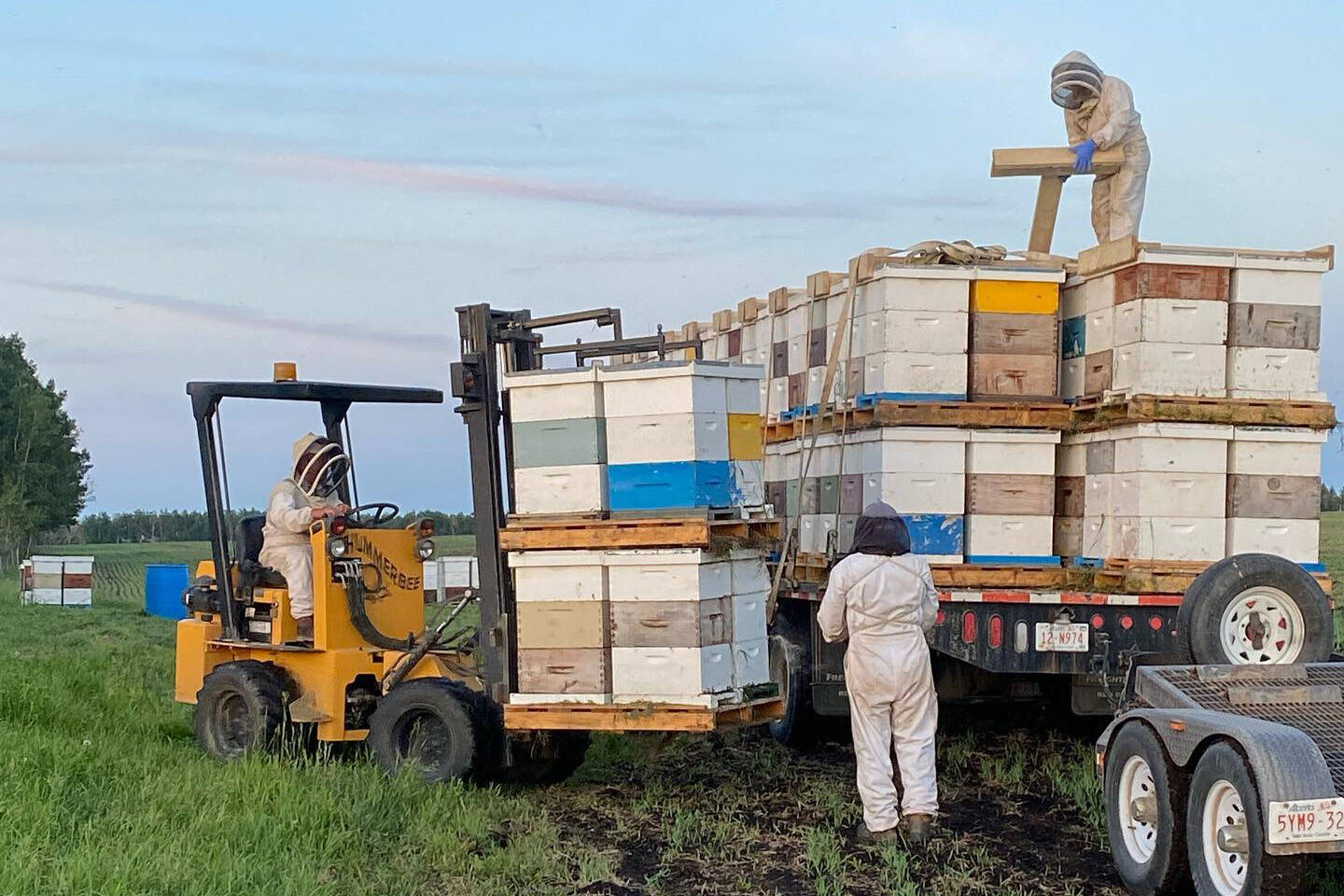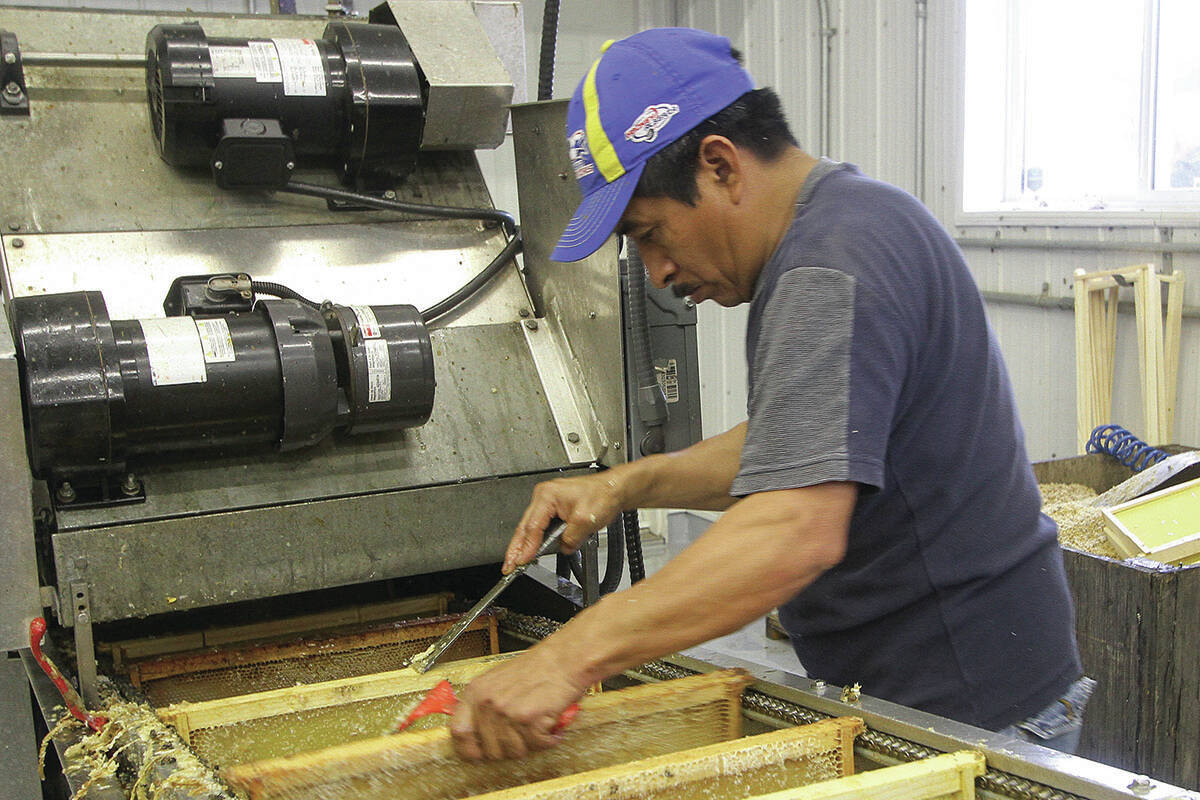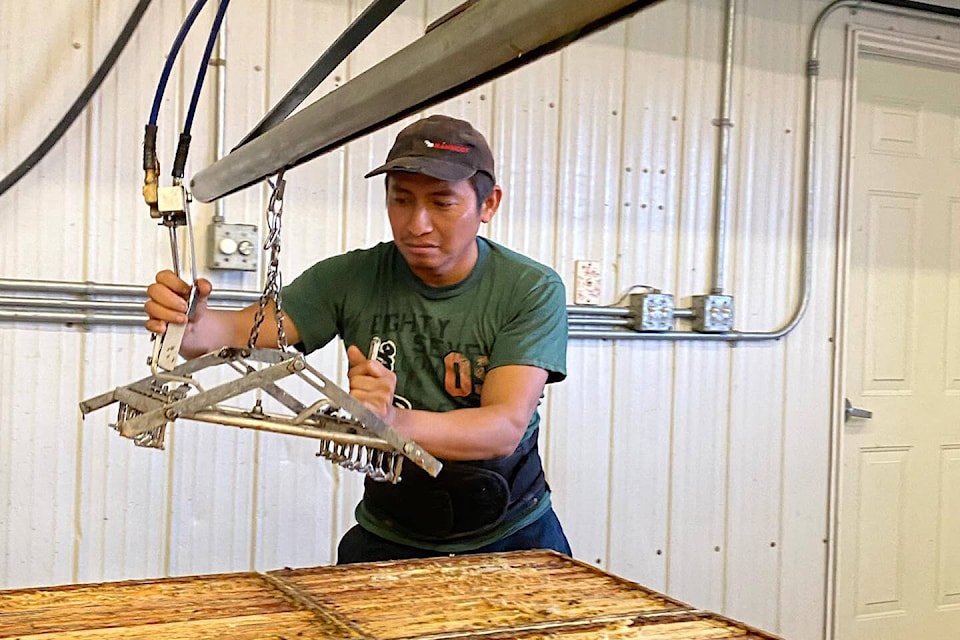Stettler-area beekeeper Ron Greidanus recently spoke with a Wetaskiwin-area producer who was in tears because he expected to lose 90 per cent of his 5,000 hives to winter kill.
At even a much lower level of loss, it would be impossible for a beekeeper to restore production from within their operation by splitting healthy hives, the most common method of trying to rebuild operations after large bee deaths, said Greidanus.
“Once you get to 40 per cent, it’s physically impossible to recoup losses,” said Greidanus, who has been around bees since 1974 and has been running Greidanus Honey Bee Farm near Stettler since 1998.
Alberta’s bee community is a tight group and Greidanus expects that many will step up to help those like his friend who have been hardest hit by a soaring winter mortality rate.
It is early yet and Greidanus has not had a chance to check all of his 3,400 hives, but he expects his losses will be at least 30 per cent. His brother, who raises bees in the High River area, has had his worst spring ever, losing 40 per cent of his bees out of 5,000 hives.
“He’s typically used to less than 10 per cent winter loss. Now, he’s got a wreck. He’s got no packages (of replacement bees) on order and he’s like, ‘There’s no way I can rebuild in one year. I just can’t.’”
Greidanus said a normal hive loss is around 10 to 20 per cent over the winter. This spring, he estimates most of Alberta’s 180 beekeepers are seeing losses in the range of 30 to 40 per cent and about one-third could lose half their bees.
The problem is not limited to Alberta. Beekeepers are seeing massive losses across the country.
“I’ve talked to guys in Manitoba. I’ve talked to guys in Ontario. It’s the same story. It’s devastating. It’s just heartbreaking.”
Kevin Nixon, whose family owns Nixon Honey east of Innisfail, said he was on a conference call with other producers from across the country on Thursday morning and they all reported losses much higher than normal.
There have been reports of losses as high as 70 to 80 per cent.
Nixon figures he has losses around 30 per cent so far, but he still has about one-third of his 10,000 hives to check.
“It’s likely going to go up from there yet. It’s still early.”
Rebuilding by splitting hives is an option but it comes at a cost. “Once you get into these kinds of numbers, if you choose to rebuild your hive and your stock you’re going to sacrifice production. There’s no question about it.
“You’re depopulating your good hives to make up numbers.”
A healthy hive coming out of winter usually has a population of 10,000 bees. That increases in the summer, peaking at up to 70,000 bees.
The high mortality rates mean thousands of beekeepers will be hard-pressed to maintain production and pay their bills.
Nixon said the bee fatality issue is complicated and the industry and researchers are trying to determine what has caused the high losses. Besides looking at those hardest hit, the work will involve trying to figure out why some producers were spared.
“We’ve been battling this mite for years and when the mite population gets higher they also transmit viruses and there is nothing you can do about viruses.”
Among the questions they will be looking at is whether the bees are becoming more susceptible to the viruses or whether the viruses are getting stronger and hitting bees harder.
But finding ways to combat losses will take time. “Nothing happens quickly and it usually involves regulation and government input and approval.”
For farmers, who count on bees to pollinate their crops, the industry’s struggles will have an impact on them as well. In Alberta, hybrid canola growers are among those who rely on bees. On the East Coast, blueberry growers expect to be thousands of hives short of what they need.
The bad news comes at a time when the industry had been doing well. Canadian honey producers harvested just under 90 million pounds of honey last year, up eight per cent from 2020.
Prices have been the best in years and honey sales — 90 per cent of which are exports to the U.S. and Japan — soared 39 per cent to $278 million last year, according to the Canadian Honey Council.
In Alberta last year, hives were thriving at the start of the summer — which in the sometimes perverse way that nature operates — likely contributed to last winter’s death rates.
Large populations of healthy bees attract pests, such as varroa destructor mites, which besides feeding on bees also introduce deadly viruses into hives.
“When bees do well, (mites) do well,” said Greidanus.
While beekeepers treat hives for the mites, measures are not foolproof and there is little that can be done to tackle viruses.
For Alberta beekeepers, last summer’s drought also took a toll on bee populations as they headed into winter. The large bee population consumed all the pollen — its source of protein — that could be found. And the drought meant there was less pollen to go around.
That meant many hives went into the winter already under stress, making them more vulnerable to mites and viruses.
To rebuild production, beekeepers can buy bees and queens from elsewhere, but they are expensive and supplies are short.
Greidanus spent $143,000 last November on bees from Australia and queens from Hawaii. His foresight will allow him to rebuild some of his hives and means he will be able to honour his pollination contracts.
However, there is nowhere near enough imported bees available — even if a producer could afford the current high prices — to come close to covering all of the losses across Canada, he said.
Whether this year ultimately avoids becoming a disaster depends on so much that is out of beekeepers’ control. Will honey prices stay high? Will fuel costs continue to rise? Will the weather co-operate?
Nixon said for producers, who fed their bees, treated them for mites while facing soaring input costs, the latest setback stings.
“It’s just really disappointing. You have used all the tools in your tool box and you’ve done the best you can and you come out with these results.
“And it’s just not us. It’s very widespread.”
News tips
Like us on Facebook and follow us on Twitter


